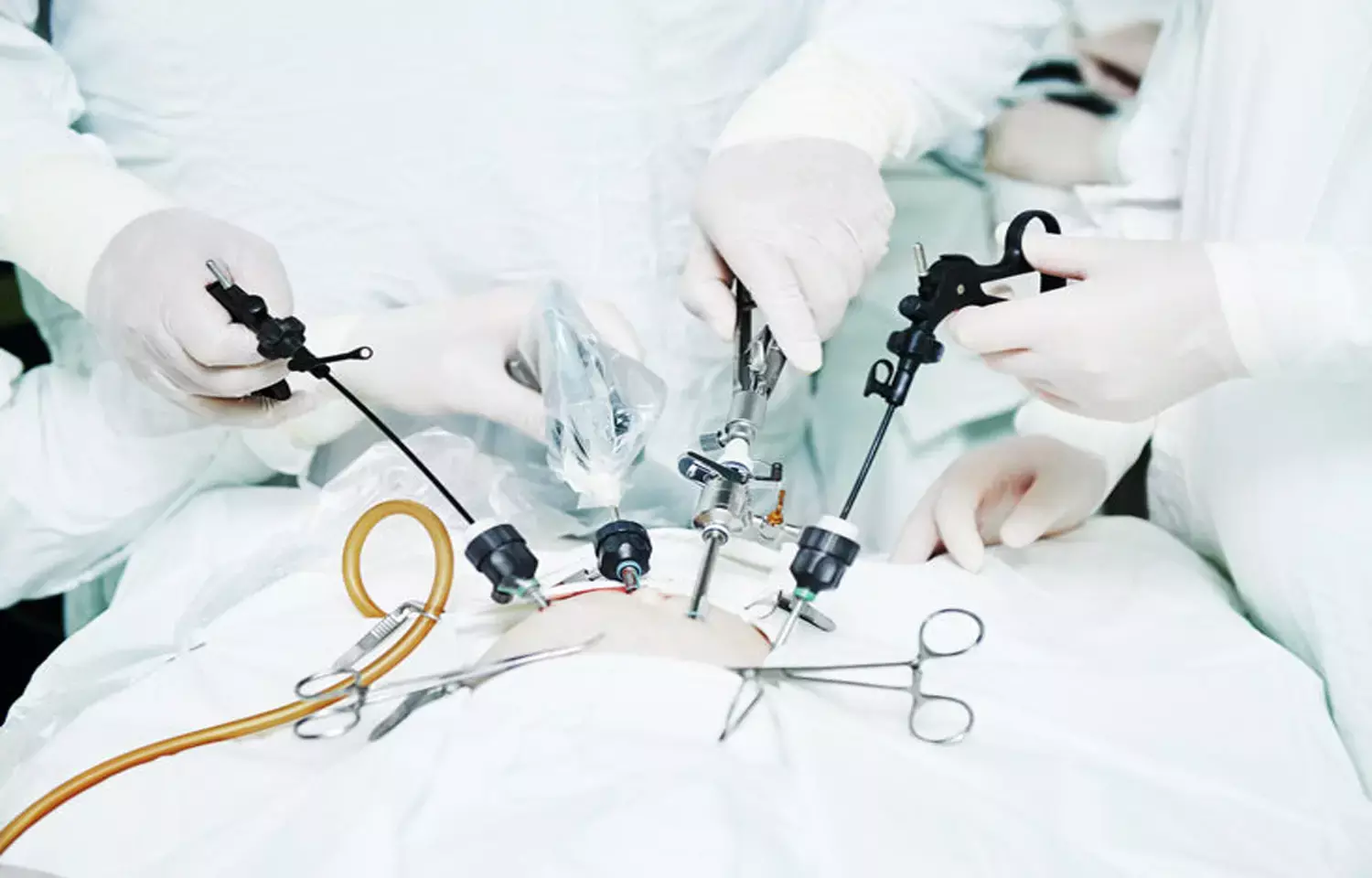- Home
- Medical news & Guidelines
- Anesthesiology
- Cardiology and CTVS
- Critical Care
- Dentistry
- Dermatology
- Diabetes and Endocrinology
- ENT
- Gastroenterology
- Medicine
- Nephrology
- Neurology
- Obstretics-Gynaecology
- Oncology
- Ophthalmology
- Orthopaedics
- Pediatrics-Neonatology
- Psychiatry
- Pulmonology
- Radiology
- Surgery
- Urology
- Laboratory Medicine
- Diet
- Nursing
- Paramedical
- Physiotherapy
- Health news
- Fact Check
- Bone Health Fact Check
- Brain Health Fact Check
- Cancer Related Fact Check
- Child Care Fact Check
- Dental and oral health fact check
- Diabetes and metabolic health fact check
- Diet and Nutrition Fact Check
- Eye and ENT Care Fact Check
- Fitness fact check
- Gut health fact check
- Heart health fact check
- Kidney health fact check
- Medical education fact check
- Men's health fact check
- Respiratory fact check
- Skin and hair care fact check
- Vaccine and Immunization fact check
- Women's health fact check
- AYUSH
- State News
- Andaman and Nicobar Islands
- Andhra Pradesh
- Arunachal Pradesh
- Assam
- Bihar
- Chandigarh
- Chattisgarh
- Dadra and Nagar Haveli
- Daman and Diu
- Delhi
- Goa
- Gujarat
- Haryana
- Himachal Pradesh
- Jammu & Kashmir
- Jharkhand
- Karnataka
- Kerala
- Ladakh
- Lakshadweep
- Madhya Pradesh
- Maharashtra
- Manipur
- Meghalaya
- Mizoram
- Nagaland
- Odisha
- Puducherry
- Punjab
- Rajasthan
- Sikkim
- Tamil Nadu
- Telangana
- Tripura
- Uttar Pradesh
- Uttrakhand
- West Bengal
- Medical Education
- Industry
Diagnostic Laparo + hysteroscopy better modality for diagnosing infertility compared to HSG and USG

Infertility is defined as the inability to conceive after one year of unprotected regular sexual intercourse. Total infertility is divided into primary and secondary infertility. Primary infertility is defined as the inability to conceive after one year among women 15 to 49 years old with contact with sexually active partners and no contraceptive use. Secondary infertility refers to the inability to conceive following a previous pregnancy.
For many couples, infertility and its treatment cause a serious strain on their interpersonal relationship, and cause disturbed relationships with other people. The most common factors responsible for infertility in females are anovulatory disorder, tubal factors, uterine and cervical factors along with endometriosis. One third of the infertility cases are due to anatomical abnormalities of the female reproductive tract such as tubal blockage.
An accurate diagnosis is the best key to the treatment. The workup of the female partner begins with history and examination. It is more important to perform the relevant investigation in a logical order at the correct time as compared to the routine simple so least invasive and most predictive investigations should be performed first. A number of diagnostic tests are being used in clinical practice to assess tubal patency as part of the work-up for subfertility.
Conventional way to assess the uterine cavity, tubal structure and tubal patency was Hysterosalpingography but now it has been largely superseded by laparoscopy and hysteroscopy. Laparoscopy is considered the clinical reference test for diagnosing tubal pathology.
Diagnostic laparoscopy is generally not a part of initial infertility evaluation, however, number of reports haves shown that it is effective procedure for evaluation of long-term infertility
A total of 207 patients were studied from at GMCH, Gondia, Maharashtra. Total 207 patients had primary/secondary infertility and 5 patients had primary amenorrhea were selected for study. Uterus, ovaries, tubes and cul de sac were inspected and findings noted. Next chromopertubation test was done with 10-15 ml of 1% aqueous methylene blue via the leech-Wilkinson cannula was inserted and findings noted and statistical Analysis was done.
India showed the mean age of infertility was 28.4years. 81.16% subjects had primary whereas 16.43% had secondary infertility. In the present study maximum 165 (79.7%) had normal size uterus. Out of which 8 (3.86%) had bicornuate uterus.
Diagnostic Laparoscopy was significantly beneficial in detection of normal uterine pathologies and all ovarian pathologies but not significantly beneficial in detection in small and large uterine pathologies. Incidence of patent tubes on Laparoscopy with chromopertubation is significantly better than HSG in diagnosing patency and pathologies of fallopian tubes.
In present study, 14% subjects had tubal adhesions while 3% had ovarian adhesions and 13.04% subjects had both tubal and ovarian adhesions.
According to the findings of the present study, Laparoscopic diagnosis and hysteroscopy is a better modality for diagnosing uterine, tubal and ovarian causes of infertility compared to hysterosalpingography and ultrasonography. Most of the patients had normal ultrasonographic, hysterosalpingographic and laparoscopic findings. In most of the patients, structural adhesions were the most common cause of infertility among women in reproductive group.
MBBS, MD Obstetrics and Gynecology
Dr Nirali Kapoor has completed her MBBS from GMC Jamnagar and MD Obstetrics and Gynecology from AIIMS Rishikesh. She underwent training in trauma/emergency medicine non academic residency in AIIMS Delhi for an year after her MBBS. Post her MD, she has joined in a Multispeciality hospital in Amritsar. She is actively involved in cases concerning fetal medicine, infertility and minimal invasive procedures as well as research activities involved around the fields of interest.
Dr Kamal Kant Kohli-MBBS, DTCD- a chest specialist with more than 30 years of practice and a flair for writing clinical articles, Dr Kamal Kant Kohli joined Medical Dialogues as a Chief Editor of Medical News. Besides writing articles, as an editor, he proofreads and verifies all the medical content published on Medical Dialogues including those coming from journals, studies,medical conferences,guidelines etc. Email: drkohli@medicaldialogues.in. Contact no. 011-43720751


